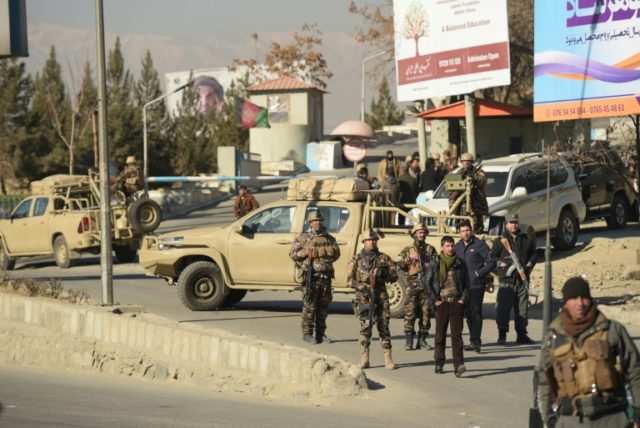The magnitude of the Afghan Taliban’s strength and influence has reached historic proportions despite the significant increase in American military airstrikes and operations under U.S. President Donald Trump.
Nevertheless, Trump administration officials say the president’s Afghanistan war strategy unveiled in August 2017 is starting to bear fruit, reversing the terrorist group’s momentum that flourished soon after former President Barack Obama ended the American combat mission at the end of 2014 and withdrew the majority of American troops.
While the Taliban’s influence over the population has reached unprecedented levels, the group’s manpower may have as well.
The Taliban controls or influences more territory now—about 45 percent of Afghanistan—than during any other time since the U.S. military removed the group from power at the end of 2001.
Several assessments indicate that, currently, the number of Taliban terrorists in Afganistan exceeds the number who were in the country in 2001.
The U.S. military and experts acknowledge that the true number of Taliban jihadists is difficult to gauge given the different factions across Afghanistan.
NBC News recently reported that Taliban currently counts with at least 60,000 jihadists at its disposal, nearly double the 35,000 who were in Afghanistan during the peak of the war in 2011.
Citing unnamed U.S. officials, the news outlet noted that the number of Taliban terrorists dropped to 20,000 in 2014, right before Obama ended the American combat mission on December 31 of that year.
By the end of 2015, the U.S. State Department found that the Taliban had become the world’s most prolific terrorist organization, carrying out more attacks (1,093) than any other group, including the Islamic State (ISIS/ISIL).
NBC News noted that the Taliban has tripled its manpower, from 20,000 in 2014 to 60,000 now, reporting:
In 2014, U.S. officials told NBC News that the number of Taliban fighters in Afghanistan was about 20,000. Four years later, one U.S. defense official said the current Taliban strength is at least 60,000. Another senior U.S. official said 60,000 “passes the sniff test,” while a third official said 60,000 is “a place to start.
An Afghan official told NBC News earlier this month that the Afghan estimate of Taliban strength is also 60,000. That marks a significant increase from the estimate of 35,000 that Afghanistan’s TOLO news attributed to an Afghan defense official in 2011.
Currently, an estimated 14,000 U.S. troops are fighting against 60,000 Taliban terrorists and a plethora of jihadists from various other groups, including the Islamic State (ISIS/ISIL).
The Afghanistan-Pakistan region is home to the highest concentration of U.S.-designated terrorist groups in the world, according to the Pentagon.
On Tuesday, John Sullivan, the Deputy Secretary of State, told lawmakers that Trump’s strategy is starting to improve the deteriorating security conditions.
“Despite recent setbacks stemming from horrific and senseless acts of violence, the President’s South Asia strategy is showing some signs of progress,” proclaimed Sullivan. “On the battlefield, we are seeing the Taliban’s momentum begin to slow.”
However, Randall Schriver, a top Pentagon official who testified before lawmakers alongside Sullivan, conceded that the United States is “clearly not where we want to be,” noting that there have been “Taliban gains” in rural areas in Afghanistan.
According to the American military, the Taliban controlled or contested about 45 percent of Afghanistan as of October 2017, a slight increase in the territory held by the terrorists in August of the same year.
A watchdog agency reported that the record number of bombs dropped on Afghan jihadists in recent months have failed to increase the level of control Kabul has over the population.
The U.S. Special Inspector General for Afghanistan Reconstruction (SIGAR) noted:
The expanded authorities provided [by President Trump] to U.S. forces in Afghanistan have resulted in a significant uptick in U.S. air strikes and special operations against the insurgency, with the U.S. dropping 653 munitions in October 2017, a record high since 2012 and a more than three-fold increase from October 2016.
These actions have yet to increase the Afghan government’s control over its population. … The goal of the Afghan government is to control 80% of its population within the next two years.
The Pentagon official revealed Tuesday that the U.S. is currently spending about $45 billion annually on the war in Afghanistan where more than 2,260 U.S. troops have lost their lives, and terrorists have wounded another 20,290.
Since the war started in October 2011, the U.S. has spent about $877 billion on the war, revealed a recent study by Brown University.

COMMENTS
Please let us know if you're having issues with commenting.